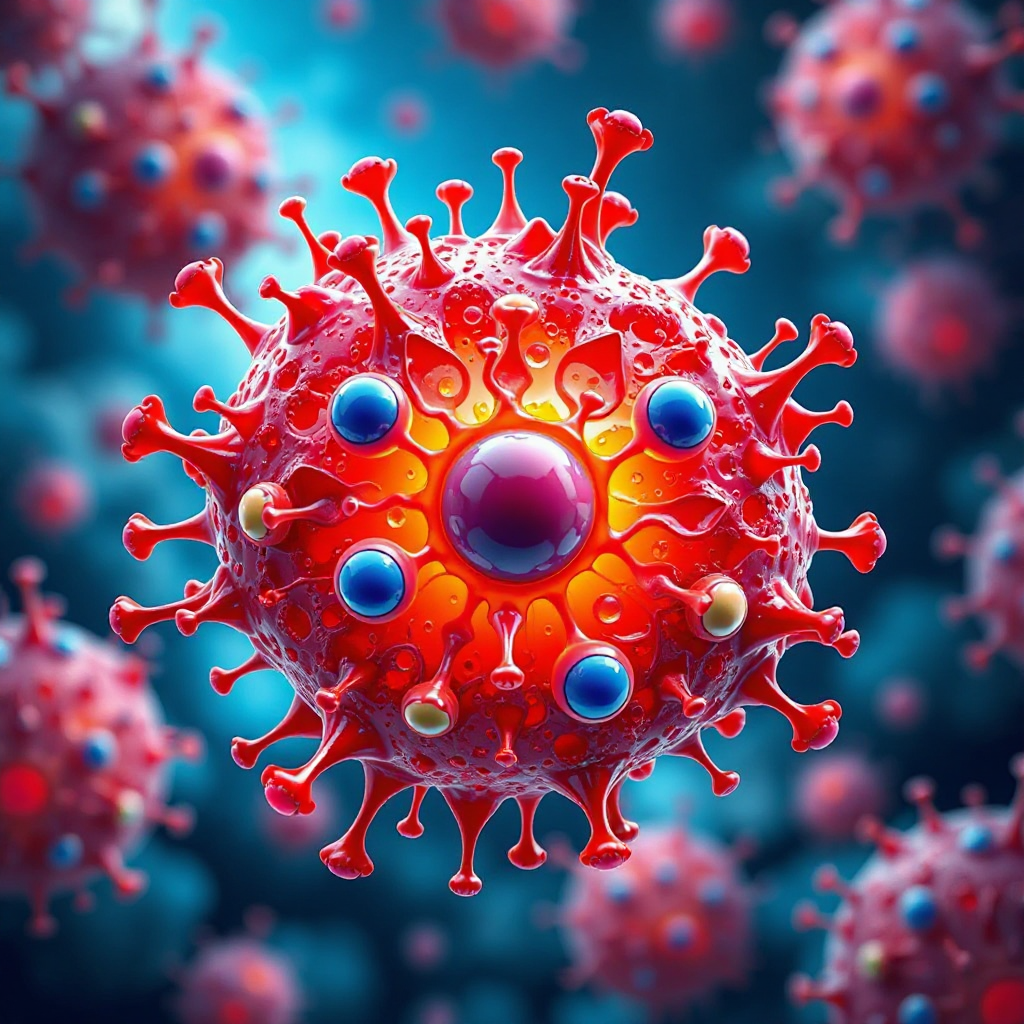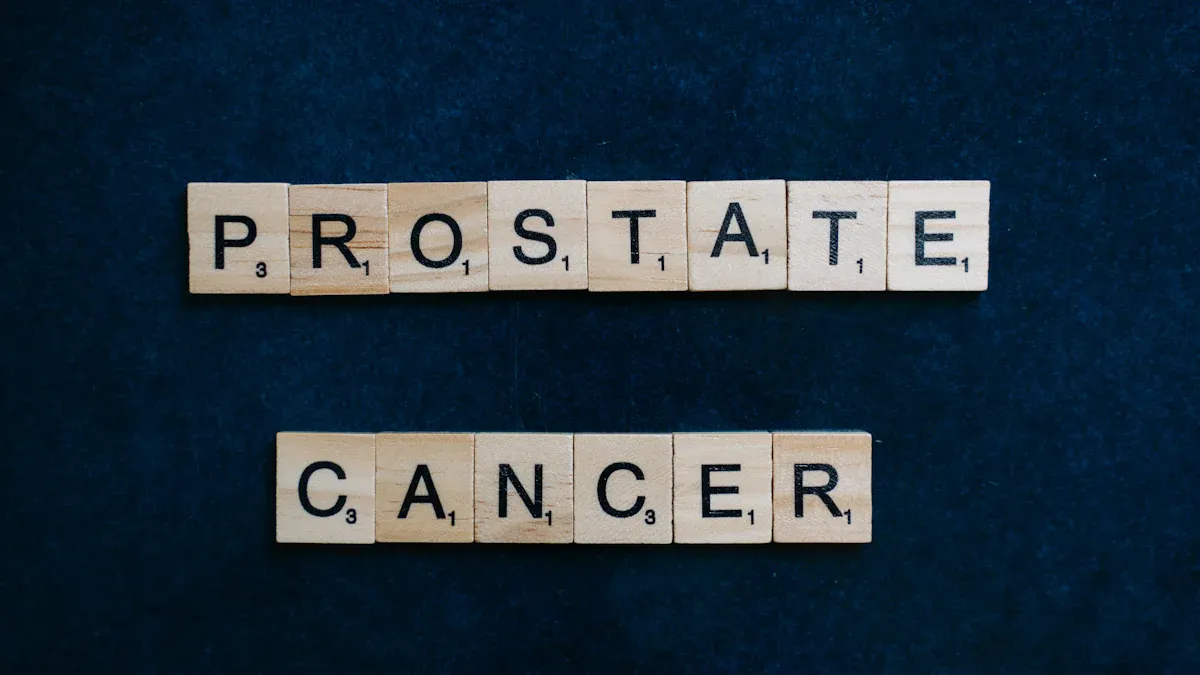Prostate Cancer-What Are the Symptoms and Causes

Prostate cancer affects millions of men worldwide, with approximately 1.5 million new cases diagnosed each year. This condition often develops silently, making it difficult to detect early without regular screenings. When caught in its early stages, the 5-year survival rate exceeds 99%, offering hope for effective treatment. You should pay attention to any unusual changes in your body, as early detection can significantly improve outcomes. Understanding the risks and symptoms empowers you to take control of your health.
Key Takeaways
Prostate cancer can grow without clear symptoms. Regular check-ups help find it early, making treatment more effective.
Common signs include trouble peeing, peeing often, or pain while peeing. Spotting these signs early is important to get help.
Your genes play a big role in prostate cancer risk. If family members had it, your chances are higher. Talk to your doctor about tests.
How you live matters. Eating healthy and exercising can lower your risk. Try eating more fruits, veggies, and plant-based foods.
If you notice blood in your pee or have lasting pain, see a doctor right away. Finding it early can lead to better results.
Symptoms of Prostate Cancer

Prostate cancer often develops silently, but as it progresses, you may notice a variety of symptoms. These symptoms can affect your urinary system, sexual health, and overall physical well-being. Recognizing these signs early can help you seek timely medical advice.
Urinary Symptoms
Changes in your urinary habits are among the most common signs of prostate cancer. You might experience:
Difficulty starting or stopping urination.
A weak or interrupted urine flow.
Frequent urination, especially at night.
Pain or a burning sensation during urination.
A strong, sudden urge to urinate.
While these symptoms can overlap with other conditions like urinary tract infections (UTIs), prostate cancer typically does not cause acute urinary symptoms in its early stages. Unlike UTIs, which often present with sharp pain, prostate cancer-related urinary issues may develop gradually.
Sexual Symptoms
Prostate cancer can also impact your sexual health. You may notice:
Difficulty achieving or maintaining an erection.
Pain during ejaculation.
A decrease in semen production.
These symptoms can be distressing, but they are important to discuss with your doctor. They may indicate underlying issues that require attention.
Other Physical Symptoms
As prostate cancer advances, it can cause additional physical symptoms, including:
Blood in your urine or semen.
Pain or stiffness in your lower back, hips, or thighs.
Unexplained weight loss.
Persistent bone pain or tenderness, which may signal that the cancer has spread to your bones.
Unexplained fevers.
Bone pain is particularly concerning, as it often indicates metastasis. Studies show that over 60% of men with advanced prostate cancer develop bone metastases, leading to discomfort in areas like the spine, pelvis, or ribs. If you experience persistent pain in these regions, consult a healthcare professional promptly.
Note: Many of these symptoms can result from other conditions. However, if you notice persistent or worsening symptoms, it’s essential to seek medical advice.
Causes of Prostate Cancer

Understanding what causes prostate cancer can help you take steps to reduce your risk. While the exact cause remains unclear, several factors contribute to its development, including genetics, lifestyle, and hormonal changes.
Genetic Factors
Your family history plays a significant role in your risk of developing prostate cancer. If a close relative, such as your father or brother, has had prostate cancer, your risk increases. For example:
Having a brother with prostate cancer raises your relative risk (RR) to 3.14.
Having a father with prostate cancer increases your RR to 2.35.
Two or more affected first-degree relatives (FDRs) raise your RR to 4.39.
Inherited gene mutations also contribute to prostate cancer risk. Mutations in genes like BRCA1, BRCA2, and ATM have been linked to the disease. The table below highlights some key genetic mutations associated with prostate cancer:
Gene | Variant | Association with Prostate Cancer Risk | Study Evidence |
|---|---|---|---|
BRCA1 | Pathogenic | Associated with prostate cancer | Not specified |
BRCA2 | Pathogenic | Associated with prostate cancer | Not specified |
ATM | Ser49Cys | HR 2.3 (95% CI, 1.1–5.0) | Danish cohort |
ATM | P1054R | OR 1.16 (95% CI, 1.10–1.22) | PRACTICAL consortium |
MSH2 | Pathogenic | Associated with Lynch syndrome | Not specified |
Lifestyle and Environmental Factors
Your diet and environment also influence your risk. A diet high in processed or fatty foods, such as red meat and dairy, may increase your chances of developing prostate cancer. On the other hand, a plant-based diet rich in fruits, vegetables, and whole grains can lower your risk. Studies show that men who follow a primarily plant-based diet have a 47% lower risk of cancer progression compared to those who consume more animal products.
Exposure to certain chemicals or toxins, such as pesticides or industrial pollutants, may also contribute to prostate cancer. Limiting your exposure to these substances can help reduce your risk.
Hormonal Changes
Hormones, particularly testosterone, play a critical role in prostate cancer development. Testosterone promotes the growth of both normal and cancerous prostate cells by binding to androgen receptors. Once activated, these receptors trigger the expression of genes that stimulate cell growth. This process can lead to the uncontrolled proliferation of cancerous cells in the prostate.
Tip: Regular check-ups and a healthy lifestyle can help you manage your risk factors effectively.
Risk Factors
Understanding the risk factors for prostate cancer can help you take proactive steps toward prevention and early detection. While some factors, like age and genetics, are beyond your control, others, such as lifestyle choices, can be managed to reduce your risk.
Age (most common in men over 50)
Age is one of the most significant risk factors for prostate cancer. The likelihood of developing this condition increases as you grow older. Men over 50 account for the majority of prostate cancer diagnoses. By the time you reach 65, your risk becomes even higher. Regular screenings, such as prostate-specific antigen (PSA) tests, are essential as you age to catch potential issues early.
Ethnicity (higher risk in African American men)
Your ethnicity can also influence your risk. African American men face a significantly higher likelihood of developing prostate cancer compared to white men. For example:
Statistic | African American Men | White Men |
|---|---|---|
Likelihood of developing prostate cancer | 1 in 8 | |
Diagnosis rate (per 100,000 men) | 203.5 | 121.9 |
Death rate (per 100,000 men) | 44.1 | 19.1 |
Several factors contribute to this disparity:
Historical links between race and socioeconomic status, which can increase cancer risk.
Racial bias in healthcare, leading to fewer preventive care options.
Lower treatment rates for early-stage prostate cancer among African American men.
If you belong to this group, consider discussing earlier and more frequent screenings with your doctor.
Obesity and Sedentary Lifestyle
Obesity and inactivity can also play a role in prostate cancer risk. While obesity does not necessarily increase your overall chances of developing the disease, it is associated with more aggressive forms of prostate cancer. These forms grow faster and are harder to treat. Studies suggest that men with obesity may face a higher likelihood of advanced prostate cancer and an increased mortality rate. Staying active and maintaining a healthy weight can help you lower these risks.
Family History of Prostate Cancer
Your family history is another critical factor. If your father, brother, or another close relative has had prostate cancer, your risk increases significantly. For example, having a brother with prostate cancer raises your risk more than having a father with the disease. If multiple family members have been affected, your chances of developing prostate cancer become even higher. Genetic testing and early screenings can be valuable tools if you have a strong family history.
Tip: Knowing your risk factors empowers you to make informed decisions about your health. Speak with your doctor about personalized screening recommendations.
When to Seek Medical Advice
Recognizing Concerning Symptoms
Prostate cancer often develops silently, but certain symptoms should prompt you to consult a healthcare professional. These include:
Difficulty starting or stopping urination.
A weak or interrupted urine flow.
Painful or burning urination.
Blood in your urine or semen.
Persistent pain or stiffness in your lower back, hips, or thighs.
Swelling in your lower extremities.
If you experience any of these symptoms, especially if they persist or worsen, seek medical advice promptly. Early detection can significantly improve treatment outcomes.
Routine Screening Recommendations
Routine screenings play a vital role in detecting prostate cancer early. For men at average risk, experts recommend discussing screenings with your doctor starting at age 50. However, if you belong to a high-risk group, you should consider earlier screenings:
At age 40 if you have multiple first-degree relatives with early prostate cancer.
Screening methods include the prostate-specific antigen (PSA) test and the digital rectal exam (DRE). These tests can help identify prostate cancer before symptoms appear.
Organization | Recommendation |
|---|---|
American Urological Association | Inform men aged 55–69 of benefits and harms; recommend shared decision-making. |
American Cancer Society | Begin discussions at age 50 for average-risk men; earlier for high-risk groups. |
Talk to your doctor about the best screening schedule for your situation.
Consulting a Healthcare Professional
Preparing for a doctor’s visit can help you make the most of your appointment. Write down your symptoms, including when they started and how often they occur. Bring a list of questions to ask your doctor, such as:
Do I need additional tests before deciding on treatment?
How likely is my cancer to cause problems if left untreated?
These questions can guide your discussion and help you understand your condition better. Regular screenings and open communication with your doctor are key to managing your health effectively.
Prostate cancer often progresses silently, making early detection essential for better outcomes. Screening offers significant benefits, including a nearly 100% 5-year survival rate for localized cases. It also allows for less invasive treatments that preserve urinary and sexual function. Misconceptions, such as waiting for urinary symptoms to appear, can delay diagnosis. Instead, prioritize regular screenings like PSA tests and DREs. If you belong to a high-risk group, consult your doctor about personalized screening schedules. Early action empowers you to protect your health and improve your quality of life.
Tip: Access resources like free screenings or support groups to stay informed and proactive.
FAQ
What is the most common age for prostate cancer diagnosis?
Prostate cancer typically affects men over 50. The risk increases significantly after age 65. Regular screenings starting at 50—or earlier for high-risk groups—can help detect it early.
Can prostate cancer be prevented?
While you cannot completely prevent prostate cancer, you can lower your risk. Maintain a healthy weight, eat a balanced diet rich in fruits and vegetables, and stay physically active.
Is prostate cancer always life-threatening?
No, prostate cancer often grows slowly. Many cases remain localized and manageable with treatment. Early detection through screenings improves survival rates and treatment options.
How is prostate cancer diagnosed?
Doctors use tests like the prostate-specific antigen (PSA) test and digital rectal exam (DRE). If results suggest cancer, a biopsy confirms the diagnosis.
Does having a family history guarantee I’ll get prostate cancer?
No, but it increases your risk. If close relatives have had prostate cancer, discuss early screenings and genetic testing with your doctor.
Tip: Stay informed about your risk factors and consult your doctor for personalized advice. Early action can save lives.
See Also
Understanding Bladder Cancer: Symptoms And Underlying Causes
Exploring Colon Cancer: Key Symptoms And Causes Explained
Breast Cancer Insights: Symptoms And Causes You Should Know
Gallbladder Cancer Overview: Symptoms And Causes To Recognize
